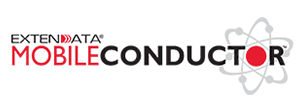How to Manage Mobile Technology for your Direct Store Delivery Team
For fast and quality customer service, you need user-focused technology that will grow and support your direct store delivery and field sales operations. However, you may have some concerns with regard to selecting the right solution for mobile device management, best practices for implementation, and how to maintain the solution. Fortunately, we’ll help you identify the options and processes you should consider for mobile device management, and how we can improve your direct store delivery or field sales operations.
Planning your Mobile Device Solution for Managing Field Sales
First, you must determine if you’ll use an on-premises or SaaS mobile device management solution. An on-premises solution is hosted on in-house infrastructure and maintained internally, while a SaaS solution is hosted in the cloud and maintained by the provider. Generally, most IT departments opt for a SaaS model due to the ease of maintenance and management over delivery and dispatch. If stronger security is a high priority for your operations, then choose a dedicated SaaS environment, but many field sales and delivery businesses use a shared cloud.
Next, bring key stakeholders together to formulate a plan for managing mobility in a way that supports users, your operations team, and the IT department. Work together to establish policies and processes that will enable the greatest productivity, best customer experiences, and the highest level of data security.
Also, decide which devices, operating systems, configurations, and apps to deploy to support your team in the field. It’s also beneficial to assign role-based user permissions. Defining roles ensures field workers will only have the tools they need to do their jobs, it will also prevent unauthorized use of mobile devices that hurt productivity and can create security vulnerabilities. . Finally, you can plan out a deployment schedule, so operations remain organized throughout the entire implementation process.
Identify Software and Device Requirements
After fine-tuning all the details of your plan, you’ll need to involve all parties, including field reps themselves, to establish workflows. Involving all stakeholders will allow you to address many details before deployment and also help with user adoption. Once you understand everything necessary for a successful deployment, such as black- or whitelisted apps, pushed apps, settings, policies, and accessories, you can design the device configuration specifically for the unique needs of your direct store delivery or field sales team
It’s critical to have a full and detailed understanding of your IT environment so that you can test apps, configurations, and policies. Doing so will lead to a cleaner rollout of services. Plus, it mitigates the risk of deploying your mobile device management platform and its policies in production, when certain admins won’t have access to all environments within your field operations.
It’s also essential in field sales management to develop knowledge bases or articles for UEM admins and help desks. This will provide you with the necessary data to support your initiative and keep your devices working effectively in the field. Additionally, you’ll need to build out training, education, and notifications for DSD or field workers. These employee education initiatives will make your workers more knowledgeable and less reliant on help-desk calls.
Finally, thoroughly test your field sales management solution to ensure smooth project implementation. This includes deploying to test or pilot users to ensure all items are working, providing you an opportunity to make changes if needed.
Implementing Mobile Device Management for Direct Store Delivery
Once you have defined and tested the “first article,” it’s time to develop your staging protocols. Our clients typically ask us to stage multiple components, which can include devices, printers, labels, and any number of other technologies. It’s our goal to provide a seamless and consistent experience when delivering technology to a user’s location. We work to ensure that users can open devices, turn them on, and go. And, to reduce downtime due to the learning curve with a new solution, you can train your employees before receiving devices, or have training staff on-site when devices arrive. It also helps to train help-desk staff, providing them with all of the knowledge available to support users throughout the delivery process.
Have a project you’d like to talk about? Contact DecisionPoint today.
Sponsored by:

Through our partnership with Zebra Technologies, DecisionPoint Systems helps organizations migrate from legacy mobile devices to modern, purpose-built mobile solutions that increase the connectivity, productivity, and security of your mobile workforce.

DecisionPoint now offers MobileConductor delivery management software for direct store delivery operations. MobileConductor helps your business grow by enabling top-notch customer service at delivery and improving operations visibility with reliable delivery data.







